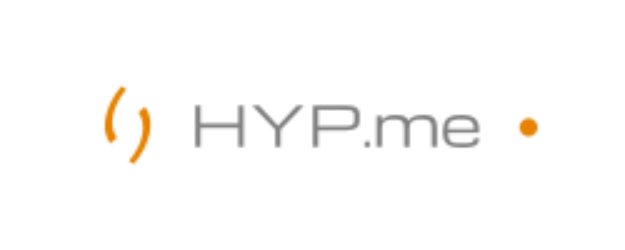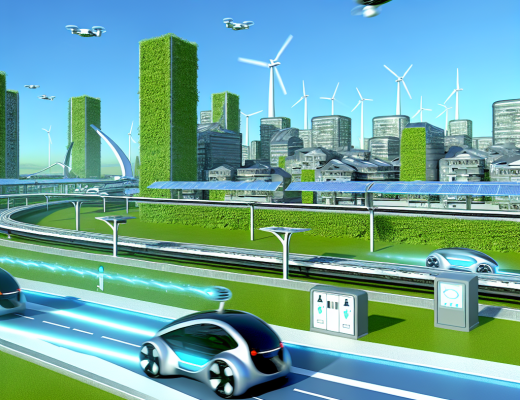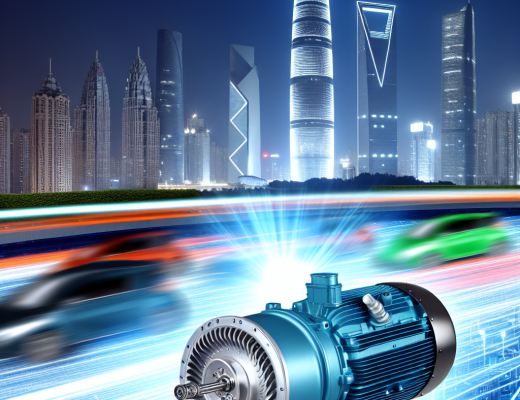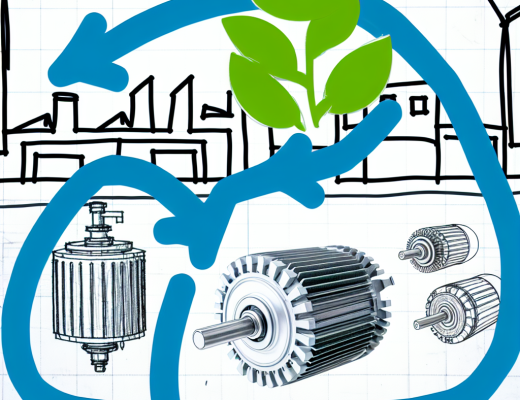Just when you thought solar energy couldn’t get any better, bifacial solar panels have emerged as a game-changer in renewable energy technology. These advanced panels capture sunlight on both sides, significantly enhancing their energy generation potential. In this post, you will explore how bifacial solar panels operate, their key advantages over traditional panels, and how they can optimize your solar energy system. Understanding their functionality will help you make informed decisions about incorporating this innovative technology into your energy strategy.
Understanding Bifacial Solar Panels
Your journey into the world of renewable energy extends to bifacial solar panels, which are an innovative solution that captures sunlight from both sides of the panel. This unique design allows for increased energy generation compared to traditional solar panels, making them an attractive option for solar energy enthusiasts and homeowners alike. By harnessing the reflected sunlight from the ground or surrounding surfaces, bifacial panels optimize efficiency and provide a better return on investment.
Definition and Technology Overview
Bifacial solar panels, as the name suggests, are solar modules that can generate electricity from both their front and rear sides. This technology utilizes high-efficiency solar cells connected between two transparent layers, often made of glass, allowing light to penetrate and be absorbed from multiple angles. This innovative design takes advantage of not just direct sunlight but also albedo effect, where sunlight reflects from surfaces such as soil, water, or rooftops, maximizing energy production.
Comparison with Traditional Solar Panels
Traditional solar panels are designed to capture sunlight only from one side, meaning they are limited in their ability to capture reflected light. In contrast, bifacial panels capitalize on both direct and reflected sunlight, offering enhanced efficiency. While both types of panels convert sunlight into electricity, bifacial panels typically outperform traditional panels in energy generation, especially in locations with high albedo and reflective surfaces.
Comparison Table
| Feature | Bifacial Solar Panels |
|---|---|
| Energy Generation | Higher due to dual-sided capture |
| Installation Cost | Generally higher, but offsets by efficiency |
| Space Efficiency | More energy per square meter |
At the end of the day, bifacial solar panels often yield a higher energy output compared to traditional options, making them a desirable choice for property owners aiming for long-term investment. While the upfront costs of bifacial technology can be higher, this can be offset by the increased energy efficiency and performance over time. Depending on the installation site, you may find that the added benefits of bifacial solar panels make them worthwhile when looking to maximize your solar energy output.
Key Differences Table
| Aspect | Traditional Solar Panels |
|---|---|
| Solar Absorption | Single-sided |
| Albedo Utilization | Minimal |
| Long-Term Performance | Standard |
Benefits of Bifacial Solar Panels
Clearly, bifacial solar panels offer numerous advantages, enhancing your solar energy experience. By utilizing both sides of the panel, you can significantly increase energy output while capitalizing on various installations, such as rooftops or ground-mounted systems. This innovative technology maximizes sunlight absorption, providing you with a more efficient and cost-effective renewable energy solution.
Increased Energy Production
To maximize your energy production, bifacial solar panels are designed to capture sunlight from both the front and the rear surfaces. This dual-surface functionality allows them to harness reflected sunlight from surfaces such as roofs or ground materials, ultimately boosting overall efficiency. The result is a higher energy yield, which translates to greater savings on your electricity bills.
Durability and Longevity
An important feature of bifacial solar panels is their durability and longevity. These panels are often constructed with robust materials that withstand environmental elements, resulting in a longer lifespan compared to traditional solar panels. This extended durability can lead to lower maintenance costs and improved return on investment for your solar energy system.
Benefits of the durability and longevity of bifacial solar panels extend beyond just performance. Their resilient design allows them to handle various weather conditions, from high winds to heavy snowfall. This reliability means you can trust your investment to provide sustainable energy for years to come, maximizing your savings and contributing to a greener planet with minimal concerns about premature replacement.
Installation and Orientation Strategies
If you’re considering bifacial solar panels, proper installation and orientation are vital for maximizing their efficiency and energy production. Positioning your panels to capture both direct sunlight and reflected sunlight is key. This often means a tilted installation to enhance exposure while avoiding obstructions like trees or buildings that can cast shadows on your panels.
Optimal Installation Techniques
Around your solar array, ensure that it sits at a suitable angle that allows both sides of the panels to receive sunlight. A general recommendation is to tilt them at an angle that matches your geographical latitude, allowing them to capture the sun’s rays more effectively throughout the year.
Site Considerations for Maximum Efficiency
Optimal site selection involves assessing your location’s terrain, vegetation, and climate conditions. The more reflective surfaces around your installation, such as light-colored roofing or gravel, the better your bifacial solar panels will perform.
In fact, the surrounding landscape can significantly enhance the energy yield of bifacial panels. Areas with snow, water bodies, or sandy terrains can reflect sunlight and boost panel efficiency. Ensure your installation site is free from shadows during peak sunlight hours, as this will optimize the overall performance of your solar energy system and make the most of your investment.
Applications of Bifacial Solar Panels
All sectors are increasingly realizing the benefits of bifacial solar panels. These innovative systems are versatile and can be effectively applied to residential, commercial, and utility-scale projects. By capturing sunlight from both sides, they enhance energy production and are suitable for various environments, making them an attractive option for both energy savings and sustainability efforts.
Residential Use
On a residential level, bifacial solar panels can significantly increase your home’s energy efficiency. By placing these panels on rooftops or in yards, you can harness sunlight from multiple angles, especially in environments where reflective surfaces or light-colored ground is available. This can lead to higher energy output, ultimately resulting in lower electricity costs.
Commercial and Utility-Scale Implementation
UtilityScale implementations of bifacial solar panels can transform large-scale energy production. These systems can be installed in solar farms or industrial settings, taking advantage of expansive open spaces to generate significant power. By utilizing both sides of the panels, these systems maximize energy capture even in large configurations, ensuring that businesses and communities receive optimal energy output.
Understanding the commercial and utility-scale applications of bifacial solar panels is necessary for maximizing your investment. These setups often employ advanced tracking systems to follow the sun, enhancing overall efficiency. With reduced costs over time and the ability to generate more energy with less land compared to traditional panels, you’ll likely find bifacial technology to be a smart choice for large-scale energy projects, contributing to your organization’s sustainability goals.
Challenges and Limitations
Not every installation of bifacial solar panels guarantees optimal performance. You may encounter several challenges and limitations that could affect energy yield and overall efficiency, such as site-specific factors, installation techniques, and environmental conditions. Understanding these aspects can help you make well-informed decisions about your solar investment.
Initial Cost Considerations
Limitations often arise from the initial investment required for bifacial solar panels. While long-term energy savings can be significant, your upfront costs may be higher compared to traditional panels. It’s important to factor in these costs against potential savings to determine if this technology aligns with your financial goals.
Environmental Factors Impacting Performance
One aspect to consider is how environmental factors can significantly impact performance. Elements such as shading, temperature, and the type of ground surface can influence the energy production of bifacial panels. You should assess these factors in your specific location to optimize your system’s efficiency. Some environmental factors to consider include:
- Shading from nearby trees or structures
- Ground reflectivity and its effect on light capture
- Temperature fluctuations that can impact panel efficiency
Any of these can directly influence the overall performance of your installation.
Challenges also arise from the varying environmental conditions in different regions. Your location will determine the type of setup you choose, and understanding these conditions is key to optimizing your system. Factors you should assess include:
- Seasonal weather changes affecting sunlight availability
- Pollution levels that could obscure panel surfaces
- Wind patterns that might impact installation stability
Any oversight of these environmental elements can lead to reduced efficiency and energy output.
Future of Bifacial Solar Technology
Many advancements in bifacial solar technology are anticipated in the coming years, with ongoing research focused on enhancing efficiency and reducing costs. As the global demand for renewable energy continues to grow, you can expect more innovative designs and materials that improve energy yield and versatility. These developments will not only make bifacial solar panels more appealing to consumers but will also play a vital role in the transition towards sustainable energy solutions.
Innovations on the Horizon
The integration of advanced tracking systems and smarter algorithms will enhance the performance of bifacial solar panels. Innovations in surface coatings and materials are also set to improve light absorption and durability, allowing for greater energy production under varying environmental conditions. As these technologies evolve, you’ll find that the efficiency and adaptability of bifacial panels become even more pronounced.
Market Trends and Adoption Rates
To truly understand the future of bifacial solar technology, you should consider the growth in market adoption and changing consumer behavior. As awareness of sustainability increases, more businesses and individuals are turning to bifacial panels for their energy needs.
Plus, data indicates that bifacial solar panel adoption is on the rise, fueled by their higher efficiency rates and the decreasing costs of installation. Many companies are now prioritizing bifacial technologies in their solar energy projects, leading to increased market penetration. As more success stories emerge and technologies improve, you can anticipate a significant shift towards these innovative solutions in both residential and commercial sectors.
To wrap up
On the whole, understanding how bifacial solar panels work allows you to appreciate their unique advantages. By harnessing sunlight from both sides, these panels can significantly improve energy generation compared to traditional models. You’ll find that their efficiency can vary based on installation conditions, such as the reflectivity of the surface beneath them. By considering your specific energy needs and the environment where you live, you can make an informed decision on whether integrating bifacial solar panels into your energy system is the right choice for you.




